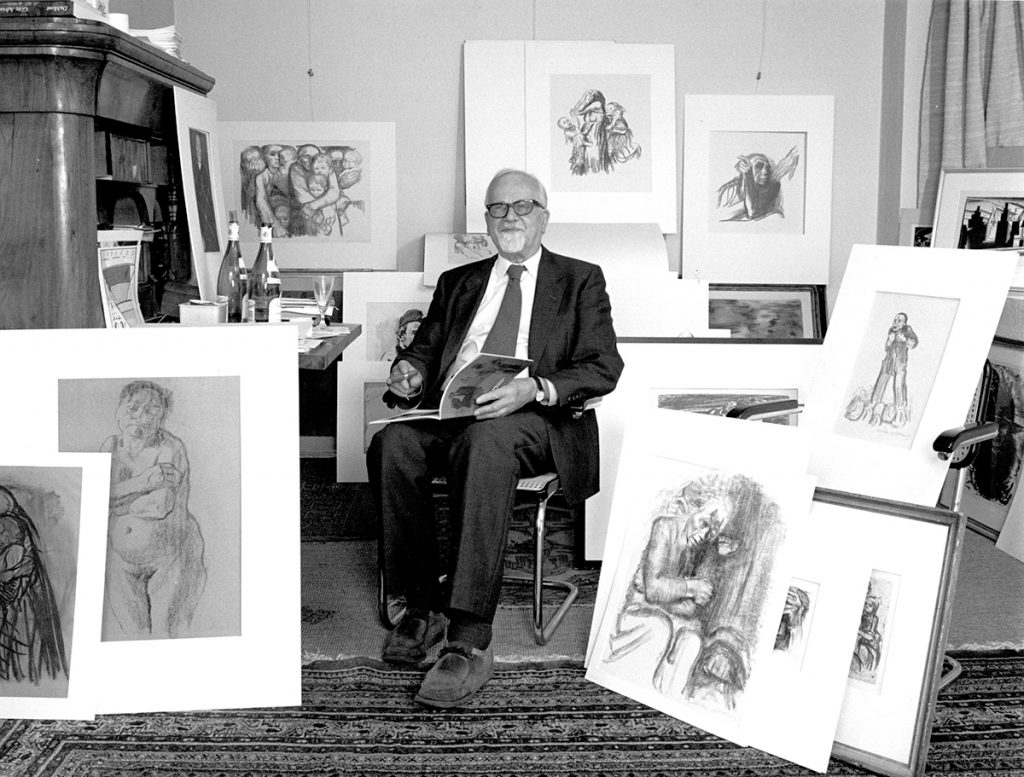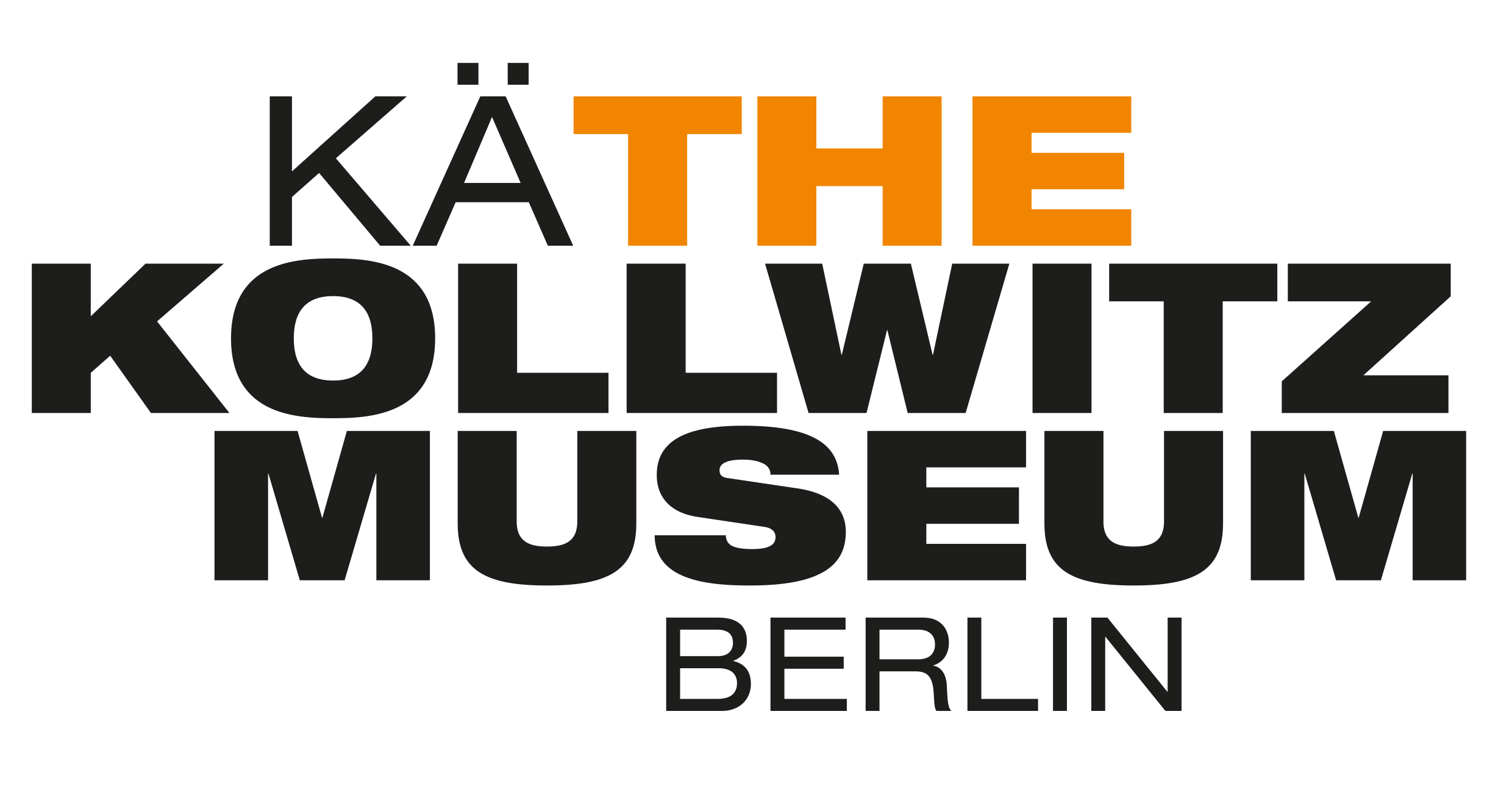In 1986, the Berlin Kollwitz Museum was founded in Fasanenstraße and has experienced successful years there. With the reopening in September 2022 at the new location in the theater building at Charlottenburg Palace, a new chapter in the history of the museum began.
For decades, the Kollwitz family and committed citizens had campaigned in vain for the establishment of a Käthe Kollwitz Museum in Berlin. It was not until 1986 that it was opened in the City West on Fasanenstraße. After a citizens’ initiative prevented the demolition of the dilapidated historic buildings in favor of a six-lane motorway, the Wintergarten ensemble (Literature House, Kollwitz Museum and Villa Grisebach) was renovated with private donations and with support from the City of Berlin.

Hans Pels-Leusden became the founder of the museum when the opportunity finally arose in 1986 to realize his wish for a museum dedicated to Käthe Kollwitz. The founder of the museum and gallery owner had already been involved with the artist for a long time and had been building up his own Kollwitz collection since the 1950s. In addition to the sculptural work that the Kollwitz family made available to the young museum, the collection of Hans Pels-Leusden forms the basis of the museum’s holdings.
The museum is run by an association and supported by an active circle of friends and partners. It sees itself as a living house that encourages dialogue about art and about human rights between peoples.
The former theater building at Charlottenburg Palace, built in 1787 according to the plans of architect Carl Gotthard Langhans, is an excellent new location for the Käthe Kollwitz Museum. It offers the museum development opportunities and eliminates structural deficits.

More about Hans Pels-Leusden (1908-1993)
The portrait statuette of Hans Pels-Leusden, which you can see in the foyer, resulted from the friendship of the sculptor Waldemar Grzimek with his gallery owner. It exists only in this one casting.

Born in Lüdenscheid in Westphalia in 1908, Hans Pels-Leusden had originally wanted to become a painter. His training in Berlin with the well-known painter Willy Jaeckel was followed by his first attempts at exhibiting his work. But National Socialism destroyed his prospects of being an artist due to his close association with German Expressionism – an art movement soon branded as degenerate. Hans Pels-Leusden scraped by with odd jobs and attempted a new start as an antiquarian book dealer in 1945, which was followed by the founding of a gallery at Kurfürstendamm 58 in 1965. He became a West Berlin institution with his commitment to art dealing, with interesting thematic and personal exhibitions.


